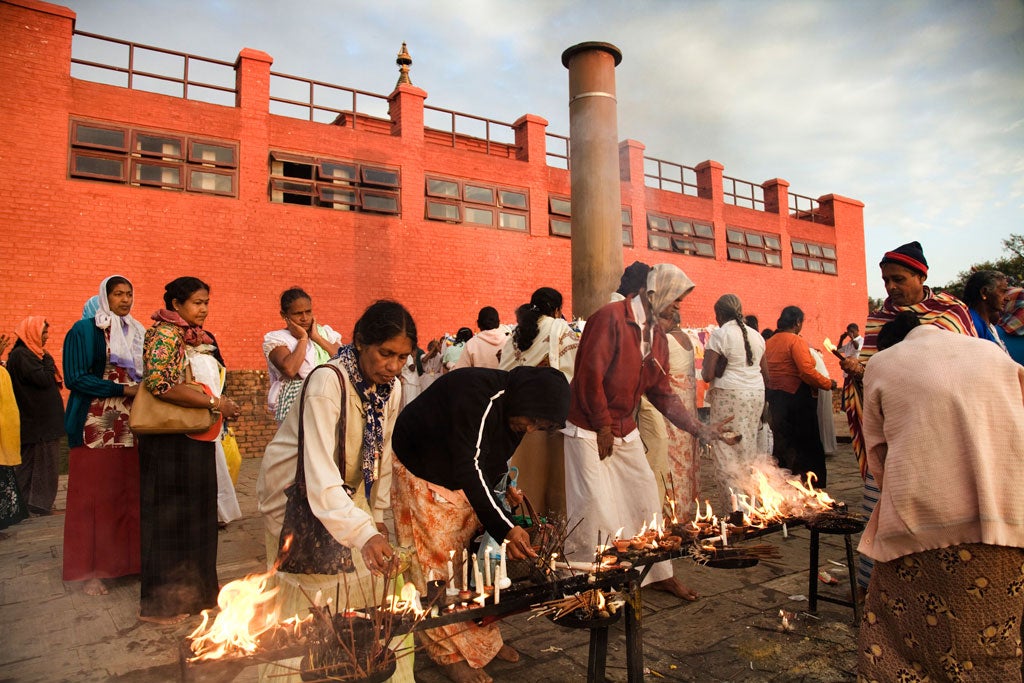Ashoka: The Search for India's Lost Emperor, By Charles Allen

"In the history of the world there have been thousands of kings and emperors who called themselves 'their highnesses', 'their majesties', 'their exalted majesties' and so on," HG Wells wrote in The Outline of History. "They shone for a brief moment, and as quickly disappeared. But Ashoka shines and shines brightly like a bright star, even unto this day."
Wells was not exaggerating much. The Indian emperor Ashoka certainly deserves to rank among the greatest names of world history, along with Gandhi and the Mughal emperor Akbar. He was already famous in Buddhist China (as King Wuyou) in the centuries after his death in c.232BC. Not only was he the first ruler to unify the subcontinent, apart from its southern tip; he was also probably the first in the world to establish a welfare state and the first to become an apostle of non-violence. He became so, under the influence of Buddhism, in revulsion at his own bloodthirsty behaviour.
An Ashokan rock edict at Girnar, on the western seaboard of India, records his conversion to non-violence following his brutal conquest of the Kalinga kingdom in central-eastern India (now Orissa), probably in 263BC. The inscription records that 100,000 Kalingas were slaughtered, half as many again were deported, and many more died from other causes. "After the Kalingas were conquered, Beloved-of-the-Gods [Ashoka] came to feel a strong inclination towards the Dharma, a love for the Dharma... Now Beloved-of-the-Gods feels deep remorse for having conquered the Kalingas". Dharma essentially stands for the concept of moral behaviour in Buddhism, Hinduism and Jainism.
Wells was writing his tribute in the 1920s, not long after Ashoka stepped out of the mists of academic history thanks to 19th-century European archaeologists and philologists. He was being deliberately provocative. More accurate is the subtitle of Charles Allen's "biography", which refers to "India's Lost Emperor".
According to Allen, the British public "showed no interest whatsoever" when Ashoka was first identified in the 1840s by British civil servants in India turned Orientalists. The Victorians could get excited about the newly discovered antiquities of ancient Egypt and Babylonia, but not those of ancient India. "A century and half later, the situation remains pretty much the same," Allen engagingly admits.
Outside India, Ashoka Maurya, unlike his near-contemporaryAlexander, or indeed his inspiration Gautama (Buddha), is not a name with any aura today. Even within India, Ashoka is not really a living presence. This is despite the emblem of the Republic of India being the celebrated Mauryan-age stone capital from Sarnath that shows four lions standing guard over four "wheels of law", and the Indian flag having the same wheel of law at its centre (sometimes misinterpreted as a Gandhian spinning wheel).
These symbols were chosen in 1947 by India's first prime minister, Jawaharlal Nehru, an admirer of Ashoka. Nehru named his daughter (and future PM) Indira Priyadarshini Nehru, her second name meaning "Beloved-of-the-Gods": the favourite title adopted by Ashoka in his rock and pillar inscriptions scattered across India.
Allen is well placed to tell this important story of colonial scholarly sleuthing, given previous books such as Plain Tales from the Raj and especially The Buddha and the Sahibs. He skilfully presents the search for Ashoka by remarkable men such as Sir William Jones, George Turnour, James Prinsep and Sir Alexander Cunningham, in Calcutta, Benares, Bodhgaya, Sanchi, Sarnath and Taxila, not to mention Buddhist Sri Lanka. He describes events as they happened, rather than with the benefit of hindsight, while throwing in tantalising clues that are elucidated in later chapters. Nor does the book shirk the necessity to explain unfamiliar material, such as the conflicting accounts of Ashoka in ancient Hindu literature, and in the two major Buddhist traditions, Theravada and Mahayana.
Brahminical tradition did not warm to Ashoka, given his attraction to Buddhism. However, there is considerable controversy over the extent to which Ashoka can be regarded as a practising Buddhist, given that his edicts rarely refer directly to either Buddhism or the Buddhist Sangha.
This is an impressively researched, much-needed study, with valuable period illustrations, which should introduce a fascinating historical figure to a new general audience. There is a significant weakness, though, in the book's treatment of ancient inscriptions. Prinsep's pivotal decipherment of the Brahmi script used by Ashoka - which enabled scholars to read Ashoka's edicts from 1837 - is explained in somewhat too cursory a manner to follow its logic.
An intriguing Brahmi inscription found in 1892, containing still-mysterious pictograms, is compared, most inaccurately, with the Rosetta Stone. And Ashoka's inscriptions are declared to be "the earliest surviving written records of India's ancient history". This is to ignore the famous inscribed stone seals of the Indus Valley civilisation discovered in the 1920s - admittedly as yet undeciphered - that predate the Brahmi script of Ashoka by two millennia.
Andrew Robinson's 'Cracking the Egyptian Code: the revolutionary life of Jean-François Champollion' will be published in April by Thames & Hudson
Join our commenting forum
Join thought-provoking conversations, follow other Independent readers and see their replies
Comments
Bookmark popover
Removed from bookmarks